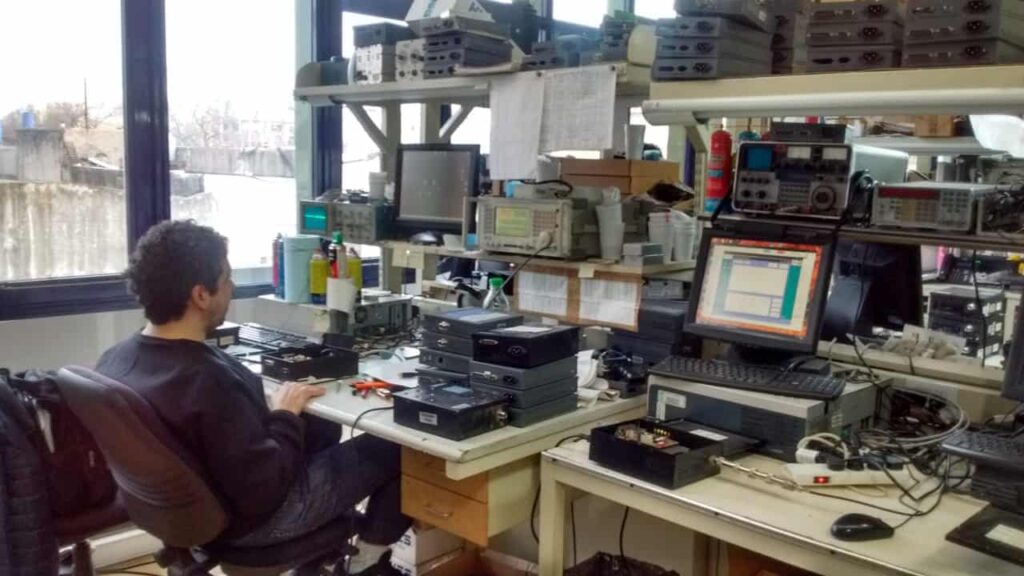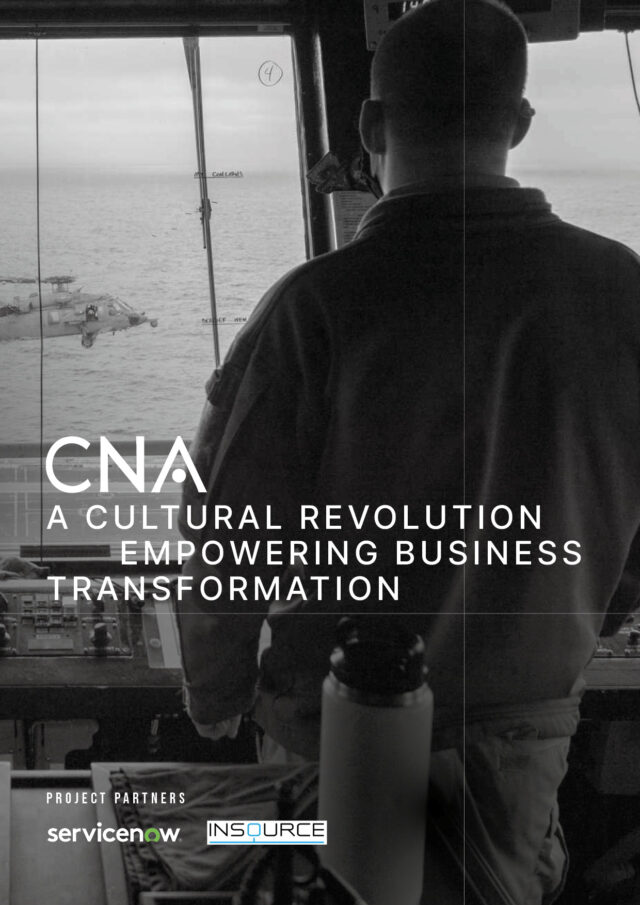Boldt Group is the leading Argentine company in the development and delivery of technologies and systems, applied at scale, to its clients: a comprehensive portfolio of entertainment and tourism enterprises. Boldt provides communications and transactional technology to clients, including digital coverage, applications and tools, often in some very remote areas, as well as more traditional services such as printing and supply chain management.

As the 87-year-old Boldt Group strives to deliver more for its clients against a wider global backdrop of massive technological change and increased customer expectation, it has seen to reorganize and realign the six distinct business units that offer up its range of client-based solutions and services as well as its internal infrastructure and support network.
In 2019, Boldt made a change to the Group’s operating structure by making each business head responsible for overseeing all activities within their business units. The six business units comprise of Communications (split into two companies: SPTI (corporate internet for business) and Orbith (satellite-based internet service for rural areas), Entertainment (platforms for hotels and casinos), Transactional Services (Gaming Lottery and agency operations, casino administration systems, online gaming and other transactional platforms), Intelligent Traffic Systems & New Business (an operational service), Printing & Graphic Services (legal printing and on-demand publishing) and The Software Factory & QA (technological development and quality assurance). Each business unit has a unique responsibility and operational focus within the Boldt Group.
We caught up with Miguel DeSantis, Group CIO at Boldt SA. “As part of that organizational change last year, they defined a few service areas that were to give service to the entire group,” he explains. “This included IT, Human Resources, Finance and Legal. In the particular case of IT, each business unit had governance of IT up to a certain kind of level, which was not standardized,” he reveals. DeSantis and his team are now deep into the process of a standardization and integration of all the business units as part of a comprehensive four-year transformation.
The changes occurring at Boldt are expansive and complex, the Entertainment business unit alone has 12 different locations within its realm. DeSantis and his team are working hard to integrate these locations in order to balance the cultural gaps in the way they work while building out new processes too. “So, we are in the middle of that change, which is a big and interesting challenge,” he laughs. “It wasn’t that IT wasn’t governed, or that there was no governance, just that the governance was perhaps not aligned at a corporate level. As part of that reorganization, I became a CIO responsible for all IT and information services and product development such as IT support, infrastructure, security and networking, Applications, Software Factory and Quality assurance.”
Such is the scale of the changes at Boldt, DeSantis started to build a PMO (Project Management Office) to deal with it. “We have to integrate every line of business, currently with different infrastructures and applications and so managing the portfolio is a really complex thing. So, I’m working on building a PMO so I can see all the portfolio projects together in one place. Imagine all the projects and in addition to that, the IT guy has to standardize all the locations so we can use the security and the networking… this is four years of work, that’s the plan. So, it’s very complex trying to manage the portfolio and all the different requirements. For example, when they build the platform for on-demand book printing, IT has to be involved.”

The Software Factory and QA report directly to DeSantis in order to maintain and align the quality of standards and certification. The main objective is to standardize the processes as each business unit has a different certification, perhaps with a different vendor and processes. “Perhaps they don’t know that the other business units have expertise on the same certification,” he says. “The idea is to give a one-stop service of support, centralized for everyone and we’re working on defining how that should be done. It’s a big challenge.” To those ends, Boldt has a steering committee every three months that presents to the business units, so a focus can be placed upon needs and requirements.
Another major change at Boldt is the introduction of an IT Business Partner into each business unit. “That person can review initiatives, right? For example, what do you need in your business? What are you thinking you need? What do you need to solve? The Software Factory is following the same message as part of this one-stop shop model. The Software Factory can put initiatives and developments to the other committees to prioritize with the same business unit. Let’s suppose that Entertainment has a requirement… the IT department can deploy a system to do that. They define their requirements together, and if it is in development, they go through the committee and help them to build the case. It could be that they’re in a position to buy software and so we can help them in order to make the comparison between different solutions to get to the final decision. Or, if someone has an initiative that impacts in IT or in a corporate system, The Software Factory can detect that and involve the correct people. If it’s an IT project, they send it to the person responsible. If it’s a mixed project, they take the responsibility of the follow-up and work together in order to build the final requirement of the program. I think that IT in most organizations is getting simpler every day, yet every day it gets more complex too. The business units often don’t know what is behind the complexities and our role is to help them. Just tell me what you need, and we will help you to build it, or we’re happy to let you know what exists. That process in the previous organization was impossible.”
One of the new tools deployed by Boldt is RPA (Robotic Process Automation) and DeSantis’ team made a hard evaluation and comparison of different tools before deciding on Automation Anywhere, which they are in the process of deploying. “We are working with different business units to gather all the things they have to automate,” he explains. “Our idea is to deploy the software and then hire a vendor to train our team so I can then train internally thereafter. In addition to that, they can support us in the process of deploying the different RPAs at the beginning, because there is going to be some delay until you catch up. We are working towards April, for the deployment of a lot of RPA initiatives.”
DeSantis is very concerned with the impacts of the cultural change at Boldt and from the beginning, explained to the team the role of the IT Business Partner and how they are going to work together. “We build the trust and a way of working,” he explains. “They then start looking at IT as a problem solver rather than a problem generator. We can improve that process in an incremental process of improvement. Once we instill trust, we start putting in some metrics. We are going to improve and try to raise the bar every time as part of the efficiency of the process,” To those ends, Boldt are working to migrate to HANA, which is another huge project although not entirely company wide as The Software Factory works mostly in Java and .NET. “We work for different clients who have different requirements, but our main force is Java.” Another major partner to Boldt as they help to establish trust within the Group is the enterprise cyber security software company Trend Micro which provides that crucial layer of security to The Software Factory and its activities.

A big Boldt initiative launched by HR recently as part of this massive transformational change is Impulso Boldt. Impulso Boldt liberates and integrates the abilities of all the company’s collaborators to the company’s 2-3,000 employees. “The idea is that each one of them, if they have an initiative, can create that initiative on a portal that we build. A team of managers of the company, like second level managers analyze each one of their requirements and then establish how to proceed. One collaborator might think there could be an improvement on one business unit, could be an IT need, could be a human resource request, could be, I don’t know, a new coffee machine… whatever they want, right? It has categories like internal efficiency and improvement of the quality of work, things like that. You can ask anything, and depending on the initiative, that team takes care and proposes that they analyze the initiative. In some cases, they cancel it or in others they proceed, build a case and present it to the management in order to deploy. With HR, we also deployed a few years ago Success Factor that is a world class tool that belongs to SAP in order to align collaborators’ objectives, collaborative work and interactions.”
A major partner for Boldt is Jira who fulfil tracking requirements with its Atlassian tool. “We have all our IT team behind Jira, and whenever you receive a request, you create a ticket. You also get an SLA (Service Level Agreement), providing a certain level of service, with all the solutions. We are starting to deploy that in the rest of the IT teams throughout the organization. In fact, a few business units asked to deploy Jira, so they are able to create that internal request. I even made a dashboard for the IT team where you can see the SLA and the productivity among other things.”
Changes are a little more complex in the case of Communications, according to DeSantis, because if you disconnect a server, say, you have to reroute the traffic. “In Communications, we are starting to work and integrate everything together into an efficiency that is already saving us $25,000 a month. We keep on reusing because every time you disconnect a server you have to reroute or add something on the side and with COVID, that can be a little more complex. But $25,000 a month is a lot of money just for aligning things, right? Our biggest partner in that space is HPE. In fact, we have HPE servers in most cases. If we can, we buy HPE.”
Everything that is digital or built for online at Boldt, is cloud native or hybrid from now on, although due to scale, some on-premise still remains. “We have on-premise, but if we can move it, we do,” DeSantis explains. “It’s easier when you start a project from a scratch, because you can do what you want. The key to the cloud is to find the features or applications that allow you to take advantage of cloud services. One option is the server-less solution, but again, that’s not for everything. Perhaps I take a whole platform and I say these two transactions could be server-less while the rest aren’t? However, every chance we get, we are going to go cloud native. Again, sometimes it is possible; sometimes it isn’t, right? For example, the Transactional team has lottery agencies that connect to our data center by radio because some of them are in rural zones.”

A lot of Boldt’s clients are casinos and one issue with regards to client management from an IT perspective is the fact that different casinos manage autonomously and in some cases two casinos will have completely different systems. Boldt is not only centralizing within the group, but also delivering infrastructure alignment and an integration of management, which align all the clients’ solutions and applications. “We have a different vendor in each business unit to provide services to our firewall solutions, for example,” DeSantis explains. “We have some business units using Check Point and others using Fortinet; it depends on the size of the business unit. If it is big, we use Check Point. If it is small, we use Fortinet, right? But each one of them has a different vendor and a different resource to give support. but all of that is behind the same super vendor that is Novared. That is our third level of support. So, one of the things we did at the beginning of this four-year plan was to centralize the governance of that security firewall solution. I make an RFP with all the vendors that work for us with the idea of having only one vendor to provide the licenses and services. With that we made savings of $150,000 a year just for centralized services.”
2020 will forever be remembered for the global crisis caused by COVID-19 and the reactions from business in dealing with the seismic shifts to operations. As with technological advancements, COVID has also accelerated many aspects of entrepreneurial endeavor and llast year saw the Boldt Group announce an ambitious plan to tackle the unprecedented social and economic impact of Covid, from a socioeconomic standpoint. The First Report of Social Responsibility Actions, reflects the initiatives and programmes developed by the company throughout 2020, which reaffirms its values, ethics and transparency in all areas, bringing the agendas and points of view of the different units and geographies closer together, with the initiatives and commitments of Boldt’s business goals. “We invite you to join us in the search for improvement opportunities that contribute and generate value for society as a whole,” it says. “At Grupo Boldt we assume the role of “entrepreneurial social actor”, faithful to the tradition and trajectory in the market and to the positioning achieved in the different businesses. Being an ACTOR means being a protagonist and we do it through our CSR in each social action.”
Boldt has developed an integral management focused on four main axes in each business unit. “In Health and Nutrition: we promote care and prevention, and the quality of life in the communities where we operate. Education: we believe that education together with technology is a transformative tool that allows equalizing opportunities. Work: we contribute with the capacity to generate quality employment in inclusive and diverse practices to promote employability. Environment: we are committed to caring for the environment and human life.” This RSE programme has seen the Group invest wealth as well as time and resources into a whole raft of initiatives designed to help its communities recover from the pandemic.
It’s a very challenging time for Boldt as it looks to transform every aspect of its operations and its offerings and services. The scale of the change is large, but the effects of this work will pave the way for a new Boldt, fully equipped to master the challenges ahead. DeSantis is clearly proud of his team and relishes the chance to sit at the center of such huge shifts at the company. “It’s a very exciting time. We have three and a half years in front of us with a lot of challenges,” DeSantis explains.
“It’s because of the challenges, that I need this view of the entire portfolio and the projects. That’s why I need to build a PMO as quickly as possible and enjoy some quick wins too because when everything starts up again, managing the projects is going to get very complex. But we are working well. I have a whole team of professionals with a wide range of skills, and I am very clear in the communications and the prioritizations – I think that helps a lot. But I have to say, my team is very professional, and they know their priorities. When they have a conflict, they know how to solve it. So, yes it really is a challenge, but it’s also great to be part of this change.”









